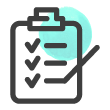한국임상연구데이터베이스(Korean Clinical Trial Database, KCT)는 한국인 연구자가 한국인을 대상으로 수행된 임상연구관련논문을 주제별, 질병특성별, 연구대상별, 연구설계, 연구중재별로 분류하고 근거수준을 부여하여 보다 손쉽게 검색이 가능하도록 분류되어 있습니다.

한국임상연구데이터베이스(Korean Clinical Trial Database, KCT)는 한국인 연구자가 한국인을 대상으로 수행된 임상연구관련논문을 주제별, 질병특성별, 연구대상별, 연구설계, 연구중재별로 분류하고 근거수준을 부여하여 보다 손쉽게 검색이 가능하도록 분류되어 있습니다.

Cochrane Translation Library 번역논문으로 의과학연구정보센터에서 운영하는 Cochrane 논문번역 라이브러리 입입니다.

Korean Nursing Database는 국가지정 의과학연구정보센터(MedRIC)에서 운영 구축하고 있는 한국간호학논문데이터베이스입니다.

Korean Dental Database는 대한치의학회에서 주관하고 의과학연구정보센터에서 운영하는 치의학 분야 저널을 제공하는 치의학분야 학술 데이터베이스입니다.